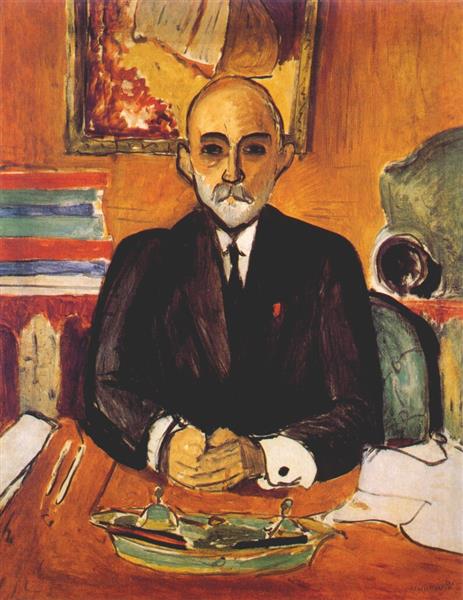Description
Henri Matisse, one of the foundational pillars of 20th-century modern art, offers us in his work "Auguste Pellerin (I)" from 1917 a complex and fascinating visual reading of a prominent figure in the art collecting sphere of his time. The painting, with its dimensions of 47x60, stands out both for its composition and for its vibrant use of color and the precision of the portrait.
At this date, Matisse was immersed in the exploration of a style that combined Fauvism with classical refinement, a confluence of the wild and the sober that manifests eloquently in this portrait. Auguste Pellerin, the subject of the work, was a significant art collector who amassed an outstanding collection of Impressionist and Post-Impressionist works, including numerous pieces by Cézanne. Thus, Matisse portraying a figure of such importance underscores not only his technical ability but also his connection with the most important artistic circles of his time.
In "Auguste Pellerin (I)", the penetrating gaze of the portrayed becomes the focal point of the work. Pellerin's eyes, intensely captured by Matisse, seem to pierce the canvas and connect directly with the viewer, establishing a direct visual dialogue. This focus on the eyes is a recurring tactic among great portraitists, and Matisse handles it masterfully.
The color palette, a distinctive characteristic of Matisse's style, is sober here but not lacking in richness. Matisse uses moderate tones, with a predominance of grays and browns, which confer the portrait a serenity and seriousness appropriate for Pellerin's figure. However, even within that chromatic sobriety, the artist plays with subtle nuances and contrasts, making different areas of the collector's face and clothing come to life in an almost three-dimensional way.
The composition of the work is equally worthy of study. Pellerin is presented in a classical posture, framed within a background that suggests an interior space but without additional distractions. This choice by Matisse allows all the attention to fall on the subject, emphasizing his presence and stature both physically and symbolically. The placement of the body and the expression of the face suggest a person of great intelligence and authority, reflecting the qualities that would have led Pellerin to be such an influential patron.
It is also significant how Matisse paints the texture of Pellerin's face and hair. The treatment of the hair, with its subtle strokes of light and shadow, and the meticulous attention to wrinkles and facial details, demonstrate acute observation and a deep understanding of human anatomy. This ability to capture the essence of the subject with such realism and at the same time with a distinctive style underscores Matisse's genius as a portraitist.
In conclusion, Henri Matisse's "Auguste Pellerin (I)" is an eloquent testament not only to the painter's artistic talent but also to the profound respect and appreciation he had for his contemporaries in the art field. This work not only immortalizes the image of one of the great collectors of the time but also serves as a window into the soul of a man who played a crucial role in the recognition and preservation of modernist art. Matisse, with his unique ability to fuse form and emotion, offers us in this painting a gem that continues to resonate in the art world.

